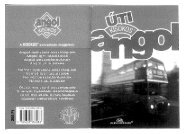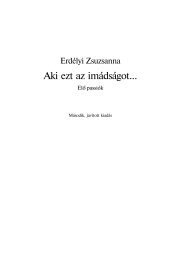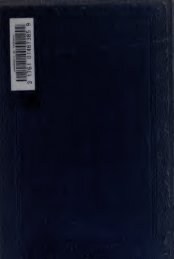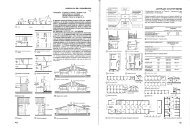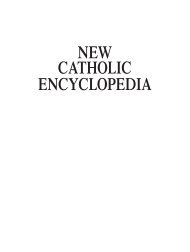Create successful ePaper yourself
Turn your PDF publications into a flip-book with our unique Google optimized e-Paper software.
Around Town – Central Pest<br />
84<br />
Façade of the Corvinus University of Budapest<br />
Corvinus University<br />
of Budapest<br />
A Neo-Renaissance masterpiece,<br />
this University was built between<br />
1871 and 1874 to house the city’s<br />
main customs house. Designed by<br />
Miklós Ybl, its façade facing the<br />
Danube is set on three levels – a<br />
colonnade supporting a balcony,<br />
with two rows of arched windows<br />
facing the river. The balustrade<br />
supports 10 allegorical figures<br />
sculpted by August Sommer. The<br />
building became the University of<br />
Economics in 1951, when it was<br />
named after Karl Marx; a statue<br />
of Marx remains in the atrium to<br />
this day. In 2000, it merged with<br />
the College of Public Administration<br />
and was renamed the<br />
Corvinus University of Budapest.<br />
d Map L6 • V, Fπvám tér 8 • 482 50 00<br />
Hungarian National<br />
Museum<br />
The National Museum was<br />
founded in 1802, and owes its<br />
existence to Count Ferenc<br />
Széchenyi (see p31), who donated<br />
his collections of books and art<br />
to the nation. The building was<br />
designed by Mihály Pollack and<br />
completed in 1845. In 1848, it<br />
was the scene of a historic event,<br />
when Sándor Petπfi recited his<br />
poem Nemzeti Dal (National Song)<br />
from the steps, thus igniting the<br />
Uprising of 1848–9. The event is<br />
re-enacted each year. The<br />
museum is the richest<br />
source of art and artifacts<br />
anywhere in the country<br />
(see pp30–31).<br />
Museum of<br />
Applied Arts<br />
The opening of this<br />
museum was the finale<br />
of the city’s 1896 Millennium<br />
Celebrations. Built<br />
to house the Hungarian<br />
State’s sizeable collection<br />
of art, the Secessionist building<br />
was designed by Ödön Lechner<br />
and Gyula Pártos. Its distinctly<br />
Eastern style is seen in the<br />
façade’s green domes and the<br />
glass-roofed courtyard. It features<br />
fine arts and crafts and traditional<br />
costumes. d Map D5 • IX, Üllπi út 33–7<br />
• 456 51 00 • Open 10am–6pm Tue–Sun<br />
Great Synagogue<br />
The Great Synagogue is the<br />
largest and most spectacular in<br />
Europe. Built in Byzantine style<br />
by the Viennese architect Ludwig<br />
Förster in 1854–9, it can house<br />
over 3,000 people. Since 1931 it<br />
has been home to the Jewish<br />
Museum (see p38), with relics<br />
relating to the history of the city’s<br />
Jews. The rear courtyard has a<br />
memorial to the Holocaust.<br />
d Map M3 • VII, Dohány utca 2 • 342 89<br />
49 • Open Apr–Oct: 10am–5pm Mon–Thu,<br />
10am–2pm Fri, Sun; Oct–Apr: 10am–3pm<br />
Mon–Thu, 10am–2pm Fri, Sun • Adm<br />
Stained-glass window, Applied Arts Museum




